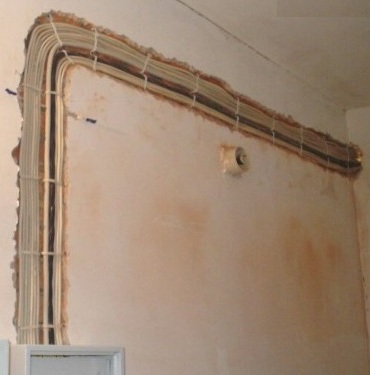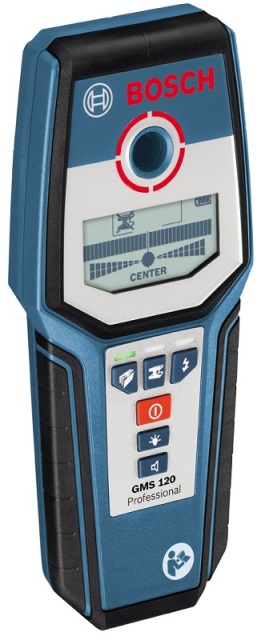Categories: Electrical Reviews
Number of views: 14342
Comments on the article: 1
Modern Flush Detectors
If you started a serious repair, then it is unlikely to do without drilling holes in the walls, without driving nails, without tightening the screws. But what about hidden wiring, which can accidentally fall under a drill, nail, screw? Drilling at random is life-threatening, but a preliminary search for wiring will make work safer.
In search hidden wiring will help you hidden wiring detector, just select the appropriate device in the store. Fortunately, today's stores of construction and household goods offer a wide range of compact, easy-to-use detectors of this kind, differing only in functionality, principle of operation and price tag. There are cheaper partitions, there are more expensive ones, but first things first.
Detector Types
According to the principle of operation, hidden wiring detectors are divided into: electrostatic, electromagnetic, metal-detector and combined (they are also universal).
Covert wiring electrostatic detectors pick up the electric field of the wire laid in the wall, electromagnetic react mainly to the magnetic component, metal detectors react to the wire core metal (moreover, they respond not only to wires, but also to pipes and fittings), and universal ones differ in that use several search methods at the same time.

Electrostatic and electromagnetic detectors are able to detect only live wiring, and if the wall is wet or made of metal, then such detectors will not show any performance at all.
The metal detector in this sense is more flexible - it will even show de-energized wiring (or fittings). But the electrostatic detector turns out to be more accurate, since it will show just the wire, and not the fittings or pipe, it is enough just to include a load with a power of about 1 kW in the socket so that the current flows through the wiring somehow sensible to the device.
Minus of the electrostatic device - it reacts poorly to low-voltage wires. The metal detector, on the contrary, finds all metal elements, whether it be an occasion, a pipe or fittings, but then you will know for sure whether there is a metal obstruction in the drilling path or not - a signal will be given to you by sound or light indication in any case.

A simple example of an electrostatic indicator that can be used as a detector for even low-current covert wiring is indicator screwdriver battery operated with remote phase detection capability.
Such screwdrivers are available in the form of conventional screwdrivers with LEDs, there are also displays and even sound indicators, but the main thing is the declared possibility of contactless operation. Such a screwdriver will allow you to detect wiring walled up not very deep into the wall, but in the thickness of concrete - hardly anything will show. For more accurate detection at greater depths, a universal detector is needed.

Electrostatic and electromagnetic detectors are suitable for use when the walls are completely dry. If the wall is wet, or the work is carried out on the street in cloudy, rainy weather, then the detector will not show anything. Here you will need a combined hidden wiring detector.
A combined (universal) device will allow you to determine several parameters at once: what kind of metal is found, how deep it lies, what the wall is made of (whether it is wood, plastic or non-ferrous or ferrous metal). Such a detector has advanced functionality, but is this wide functionality always needed? Some of the functions are not needed at all by a specific person for his task. Why overpay?
Hidden wiring detector selection
Choosing a hidden wiring detector, you should focus on your own tasks.For operation, a simple electrostatic type detector or a conventional battery-powered indicator screwdriver with remote detection function is suitable at one time. If you are a professional repairman and installer, then you definitely need a professional device with wide capabilities.
So, the selection criteria. What depth of detection will be required? Is the indication type (sound, light) critical? Is it important to be able to distinguish between metals and detect cavities inside walls? Is a wire break detection option necessary? What should be displayed? The more informative the display will be, the more accurate the information will be received both about the place of occurrence and about the material. And most importantly, the scanning depth.
The simplest detectors scan 1-2 cm, sometimes (rarely) this is enough. In residential buildings, as a rule, wiring is walled up at a depth of 5-6 cm, and cases where the wires lie deeper are extremely rare. A signal of sound, light or both types at once - the latter is better. Sound may vary depending on the depth of detection.

Flush detectors with LCD display are the most convenient devices of this class. They display on their screen all the information in the form of pictograms and graphs so that everything is intuitive. Such devices, of course, are more expensive.
When a simple detector is enough, the indication is made by LEDs without a display, this is probably enough for repairs in an apartment. As you know, it all depends on the amount of money that you have and on personal preferences.
When buying a device, you should check it directly in the store: point the device at some wire of the window display lamp, covering it with a piece of plastic or wood - so you will be convinced of the declared range.
See also on this topic:Hidden Wiring Detectors - Woodpecker, MS-158M, MS-48, BOSCH DMF 10 zoom
See also at bgv.electricianexp.com
:
